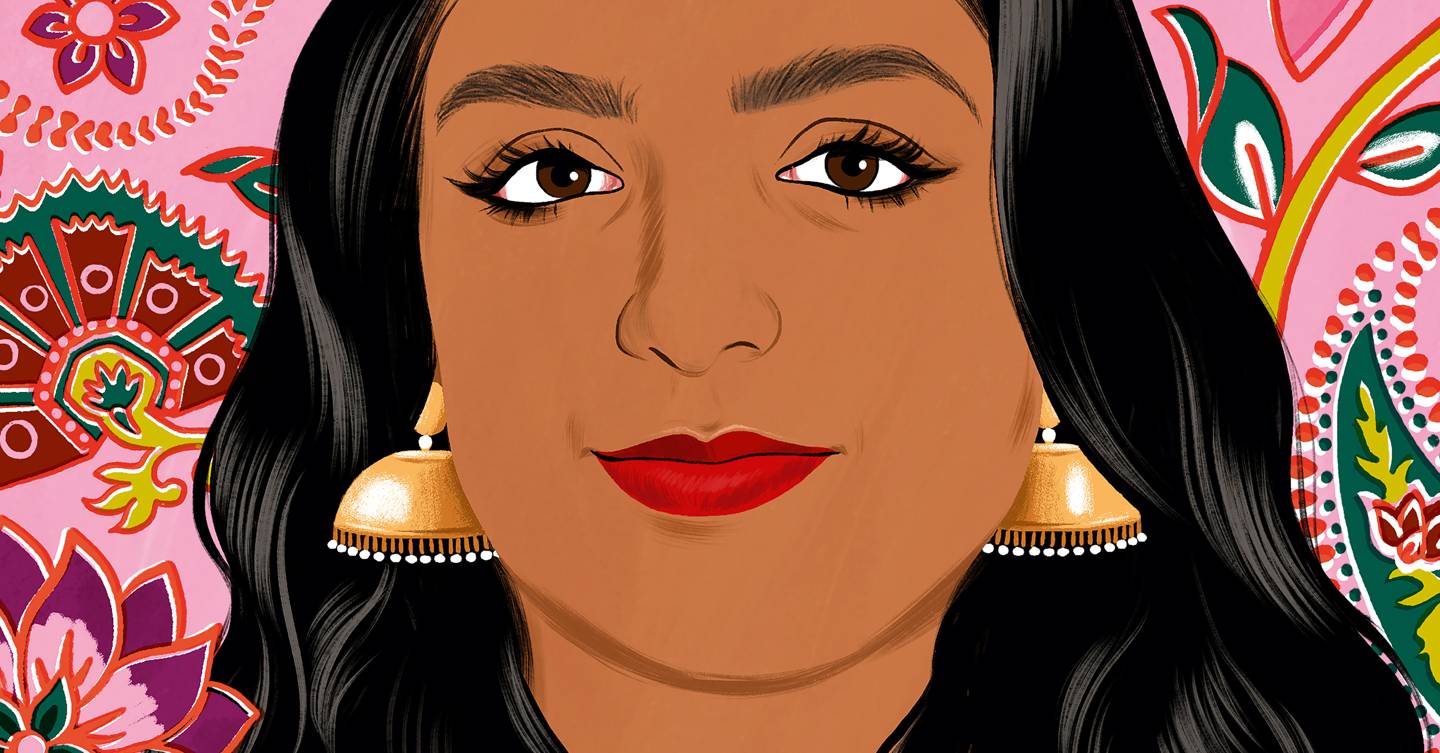There’s an incident that feels almost welded to my self-esteem. I was four and had just started school in my Welsh hometown. At lunchtimes, I gravitated towards a girl in the year above. We would play together and, in many ways, she was my first real friend. But about three days into our friendship, she looked sheepishly at the ground and said: “My mum said I can’t play with you – because you’re brown.”
We half played for a while, before she drifted away, and we never spoke again. But it was the first time I remember feeling othered for my skin colour, and the first time I realised there was a sort of ‘shame’ attached to being Indian and not white. I felt that surge of shame again when I was consistently overlooked for ‘pretty’ parts in school plays, to be the hidden narrator, watching from the sidelines as the teachers cooed over the girls with long blonde hair and blue eyes.
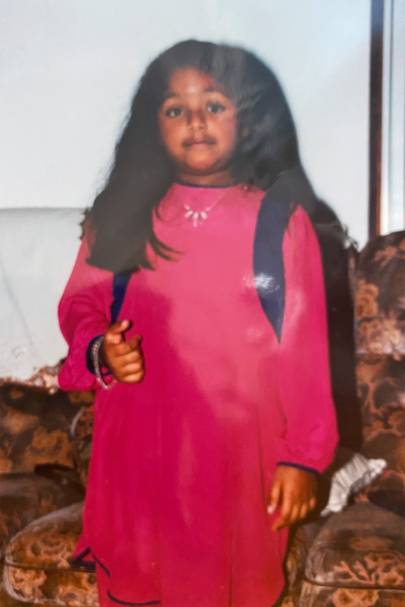
But the question I ask myself now is, did these early childhood experiences of being shamed for my colour and race make me actively reject my own culture?
Thirty-two years later, at 36, I know the answer is, undoubtedly, yes; but it took an unexpected journey back to those cultural roots during lockdown to realise this. Now I am embracing my heritage and welcoming it back into my life.
One of the biggest factors from the start was feeling like I didn’t fit into beauty ideals, partly because of my south-Indian heritage. Each year, when we’d get our annual school portraits, I’d look at mine and look at my friends’ pictures and scrutinise the differences. My curly, frizzy hair just wouldn’t sit flat like theirs, its wiry antennae poked up no matter how tightly it was coaxed into a French plait. They looked so neat, and I always felt like a mess in comparison. But I was also bigger than them – both taller and a bigger build.
I felt constantly ‘in the way’ and cumbersome; nobody ever said I was cute, and once at a friend’s birthday party I was told I was “too big” for the outfits by the organiser, when – looking back – I was fairly average. But it was too late for reason. So many incidents like this had happened that a semi-self-loathing had encroached, marauding into my life effortlessly – and it always had something to feed on.
BEAUTY (NOT) IDEALS
But there was a moment of hope on my 11th birthday that changed my life – for the better, I thought. I went to my mum’s hairdresser before my tennis party, and she asked if I wanted my hair blow-dried straight. I agreed, not really knowing what that was. After she’d wielded a round brush to ’90s curled-under perfection, I looked in the mirror and saw the unimaginable – my ultra-curly hair looked sleek and smooth.
I almost felt pretty. It was the start of a lifelong obsession with beauty and trying anything I could to feel beautiful. From then on, I tried to recreate it at home, in the days before straighteners even existed. But the Welsh weather fought back accordingly, and I’d spend the rest of my teenage years battling the constant smattering of rain, which would threaten to undo an hour’s worth of blow-drying.
With my interest in beauty now officially piqued, I’d pile into town with my friends after school to look at makeup. The Rimmel Heather Shimmer lipstick they loved looked silvery on my dark lips, which I’d now grown to loathe. My only base option was The Body Shop face powder that was far too pale, and mixed with my super-oily skin (another factor I felt I had to deal with that my paler-skinned friends didn’t) to make me look like I was always covered in a kind of tapenade (sorry if I’ve ruined olive-based spreads for you). I had zero options for concealers or foundations, though I was once offered a purple colour corrector to “even out” my skintone, which I thought might be the product to make me – finally – look beautiful.

I wore it to a party, and when I got the pictures developed, I saw a Ribena berry staring back at me, covered in purple smears – nobody explained you needed to wear it underneath foundation. No matter what I did, my brain said, “You look ugly,” and it looped on repeat; I constantly felt like I was on the outside of being pretty, looking in at something I would never be.
ALTERNATIVE CULTURE
I went through much of this turmoil silently. My parents were immigrants who had come from a culture where beauty, although prized (as long as you were fair), wasn’t prized as much as good grades (I was distinctly average) and the promise of being a doctor or engineer.
As such, my mum wore an occasional dab of perfume, blush and lipstick – but she didn’t understand my obsession with it as soon as I could start wearing makeup in my teens, or the magazines like J-17 and Mizz I’d ask for incessantly, hoping they might offer tips to help me be beautiful.
Eventually, the malaise about my looks meant I started rejecting the thing that made me different – my Indian heritage. I’d loved our family holidays to Chennai, in south India, but now I’d dread them. I stopped getting henna patterns on my hands to avoid the questions when I got back. I refused to wear a bindi as it made me look too Indian.
I didn’t want to wear Indian clothes any more – they felt like fancy dress, especially as they were so colourful – and by around age 14, all I wanted to do was listen to heavy metal and wear black, as I was now a goth. I didn’t want jasmine flowers pinned to my hair, as is customary in south India, and I stopped engaging in temple visits entirely. I felt stuck between two worlds and was filled with a huge amount of self-loathing.
The one thing that gave me solace was music. I’d skip out on family time to watch MTV, and as I got more into music that angst dialled up exponentially, and the differences between the western world I was growing up in and my Indian heritage began to show.
I was ashamed of the Indian god statues around my house and the strong cooking smells; my friends didn’t have that. My curfew at our local notorious rock club, TJ’s, was 10.30pm; I hated leaving when my pals would stay all night and fill me in on the antics the next day, and I blamed that on my strict Indian upbringing, too.
The low point in my teenage search for identity? Actually telling somebody I was Italian, because I’d heard they could be dark-skinned, too. I felt like being Italian was more acceptable than being Indian, but I never said it again as I realised it was insanely far-fetched and actually just batshit crazy.
By the time freedom beckoned at nearby Cardiff University, I’d rejected everything about being Indian. At the Freshers’ Fair, the Asian society approached me to join, but I fled in horror to the goth society – aptly named GRIMsoc – instead. My culture – as far as I was concerned – was going to Download Festival, trying to look like Fallon from nu-metal band Kittie (the only non-white goth I’d seen) and a bi-yearly trip to our Mecca, Camden, where I knew I wanted to live one day.
I started getting tattoos and was fully immersed in alternative culture – that was the identity I chose – but being brown and a goth meant I never quite measured up to the gothic pallor and pale skin the subculture prized, and I knew I’d never quite fit in there, either.
LIVING IN A WHITE WORLD
Even though I had blue hair and piercings, I coveted moody fashion editorials and whimsical images – my walls were a scrapbook of Tim Walker shoots juxtaposed with macabre visuals from i-D and Bizarre. I graduated with a journalism MA and landed a month-long internship at a prestigious fashion title.
I was terrified, though I hoped it would be an education. And it was. Everyone there was very skinny, very rich, very confident and I was the only non-white person I’d seen in the entire building. Nobody smiled, said hi, asked my name or thanked me as I did gruelling returns and call outs – fashion terms for requesting shoot clothes and returning them – endlessly.
Finally, somebody did speak to me. One blonde editor wanted something ‘walked over’ to a local fashion house. Another interjected to say, “No, it’s too far, let’s send a courier.” But the editor was relentless. “Send her,” she snarled, pointing at me and smirking at her colleague. “She could use the exercise anyway.”
It was the same feeling I had when somebody once told me to “f*ck off home” at an Exploited gig, aged 17, or when a mean girl told me I was the colour of poo in a playground, aged six. The difference? This was a professional setting, and these were meant to be adults.
In my first proper job, I was allowed to come to a features meeting – it was a big deal. We all sat around a table as the senior editors picked a cover model from the A4 pictures that were laid out on the table. One by one the editors removed the unsuitable ones, and anyone with skin darker than a light olive wasn’t deemed “on brand enough”.
The subtext? It wasn’t aspirational enough. I listened in frustration, but was too junior to speak up. Although I wasn’t naïve, I knew that in this world, whiteness was what was deemed beautiful – that’s all I’d ever seen, or experienced.
I started to climb up the career ladder, but I still carried a vestige of self-loathing and confusion around being Indian, and how I felt it had held me back. My parents always told me I needed to be twice as good to get ahead in a white world – something they, as doctors, proved was true.
But as my career progressed and I was headhunted a few times to work on exciting titles, winning or being shortlisted for over 20 awards in almost five years and with a stack of viral features under my belt, one sentiment still remained; I still felt lucky to be allowed into those environments. I never felt I could ask for a pay rise, or that I could raise a bullying issue, and despite being known for opinion pieces that held the beauty industry accountable, I still felt silenced, disconnected and always an imposter.
I knew it was time to step away from the toxicity of working on magazines, and to try to find myself again, which I did with psychotherapy and a bucketload of self-inquiry.
RACE AGAINST TIME
A milestone in this journey to self-acceptance was asking to actually go to India with my parents as they made their annual visit last year – and it started something. Once there, I relished the time spent looking through my grandmother’s recipes in frayed, hand-bound tomes.
I adored visiting the saree shops and bathing in the history of the ancient temples.
I’m angry about how India was treated under colonial rule, the ancestral trauma caused to generations of people, like myself, and that skin colour still plays a huge part in Indian society. I’m glad that Fair & Lovely – a much-used lightening cream – is being renamed, however I’d rather it was banned altogether. But that anger I feel signals a pride in where I’ve come from – finally.
Eight months later, as lockdown commenced, I headed back to my parents’ house in Wales for three months and it was the most immersed in Indian culture I’d been since I’d left home, aged 18. I learned some Indian cooking, such as dosas – a rice-flour pancake that’s a south-Indian specialty – and I began to look more into the rituals of Ayurveda, like oil pulling and self-massage, almost instinctively, as work was quiet and I had lots of self-care time on my hands.
Accidentally forgetting all my usual beauty potions back in London gave me the space to build new rituals. I started using an Indian herb mixture to wash my hair, instead of shampoo. I started looking more closely at what Indian beauty and wellness rituals really meant to me – as a sense of connecting back to the self I’d spent so long rejecting.
I did gram-flour face masks, on my dad’s recommendation, and when my mum made a trip to the Indian shop, I asked her to get the same jasmine hair oil I’d loathed as a child. I did Vedic meditation for the first time in years and started praying in our ‘pooja’ room, too. None of it seemed othering – it finally felt like home.
My recommended Indian wellness products
Jasmine Hair Oil, £3.29, Dabur
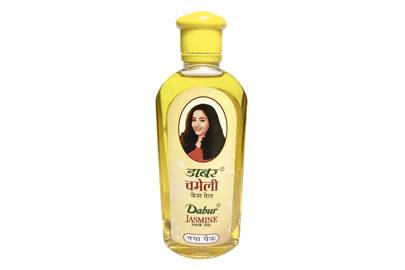
The scent of every Indian girl’s childhood. I now use this beautiful oil with a shower cap overnight and wash it off in the morning. It’s helped nourish my parched hair – and smells like our garden in India.
Spirited Kapha Body Oil, £47, Mauli
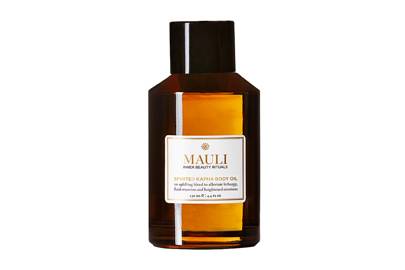
I love the rituals behind this luxury Indian-owned brand, and I now do abhyanga – a form of self-massage – on myself once a week, using this oil, designed for my Ayurvedic type, Kapha.

Like my skin, my hair has always been super oily. I now wash my hair with this centuries-old Indian hair powder made from Shikakai fruit, twice a week.
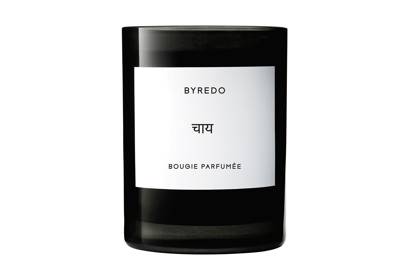
Tied to the childhood memories of founder Ben Gorham, in India, cardamom, clove and ginger are teamed with incense and woods for the dreamiest scent.
HoliRoots Shampoo, £26, Fable & Mane
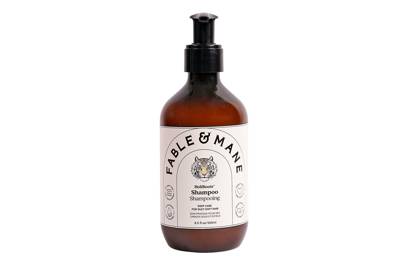
Started by two Indian siblings, this brand aims to bring Indian rituals to a whole new market – and this shampoo has been a godsend for my frazzled hair.
South Asian beauty and wellness influencers to follow
Nadia Gilani
@theyogadissident
Calling BS on cultural appropriation in yoga, Nadia’s posts always help you think twice about the wellness world and its intentions.
Simran Randhawa
@simran
Model Simran is a great example of somebody who fuses eastern and western style with ease – I wish there were people like her around when I was growing up.
Nabela Noor
@nabela
The US-based influencer speaks about interracial relationships, being Bangladeshi and everything in between in her cheery and infectious manner.
Heleena Mistry
@heleenatattoos
Heleena creates beautiful works of art, many based on Indian folklore and deities, and is an activist in the tattoo community, calling for better representation.
Naz Toorabally
@naztoorabally
Editor of South Asian alternative ‘zine Weirdo, Naz is a queer, South Asian goth with a buzzcut and some serious avant garde make-up looks that are total inspo.
